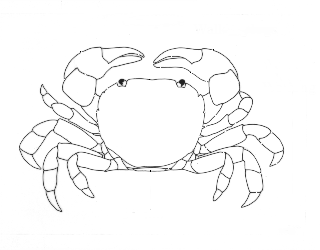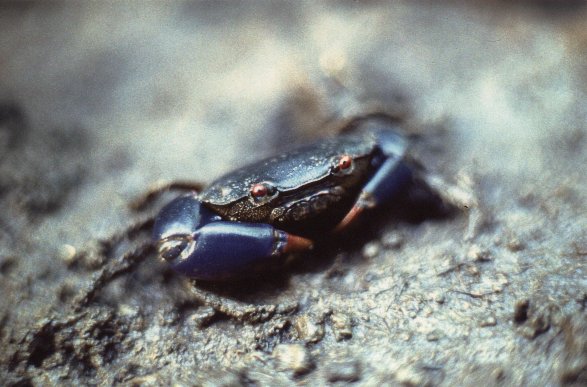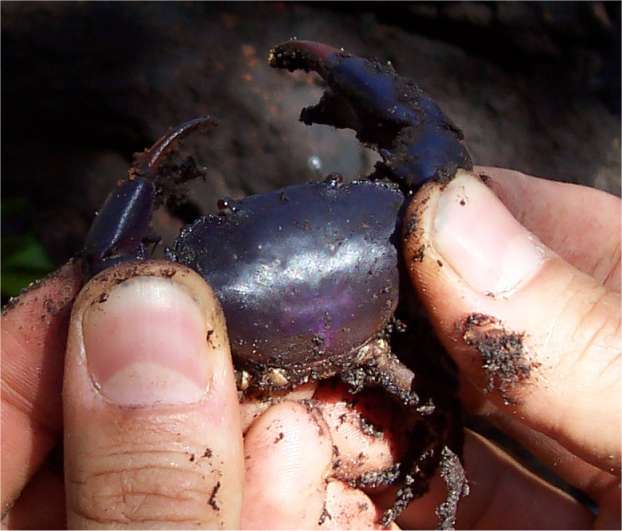
|
A field guide to Kenyan
mangroves
|
|
Eurycarcinus natalensis (Krauss, 1843)
Family: Xanthidae

This is a beautifully colored mangrove crab, also a predator with strong claws.
Zone: Edge of Avicennia marina zone to creek edge, more common in muddy regions (Gillikin, 2000). Macnae (1968) found this species from the seaward fringe into the Rhizophora and Bruguiera forests.
|
Habitat: Around the base of trees and roots, utilizes cervices in mud (Dahdouh-Guebas et al., 1999; Gillikin, 2000) Food: Ambush predator, carnivorous, eating mostly other crustaceans (Dahdouh-Guebas et al., 1999). Ecological notes: Hides in mud to ambush predators. Distinguishing characteristics: Purple color, smooth carapace, claw tips white, a single central notch on the frontal margin. Carapace width about 4 cm. Geographical range: Kenya (Dahdouh-Guebas et al., 1999), Mozambique (Clark and Paula, 2003), ??? |
|
References:
Cannicci, S., F. Dahdouh-Guebas and L. Montemagno, 1993. "Field Keys for Kenyan Mangrove Crabs." Museo Zoologico "La Specola", Dipartimento di Biologia Animale e Genetica dell'Universitą Degli Studi di Firenze, Via Romana 17, I-50125 Firenze, Italia.
Clark, P.F., Paula, J., 2003. Descriptions of ten xanthoidean (Crustacea : Decapoda : Brachyura) first stage zoeas from Inhaca Island, Mozambique. Raffles Bulletin of Zoology 51(2): 323-378.
Dahdouh-Guebas, F., M. Giuggioli, A. Oluoch, M. Vannini & S. Cannicci, 1999. "Feeding habits of non-ocypodid crabs from two mangrove forests in Kenya." Bull. Mar. Sci. 64(2): 291-297.
Gillikin, D.P., 2000. Factors controlling the distribution of Kenyan brachyuran mangrove crabs: Salinity tolerance and ecophysiology of two Kenyan Neosarmatium species. M.Sc. Thesis, Free University of Brussels, Brussels, Belgium.
Macnae, W., 1968. A General Account of the Fauna and Flora of Mangrove Swamps and Forests in the Indo-West-Pacific Region. Advanced Marine Biology 6:73-270.
